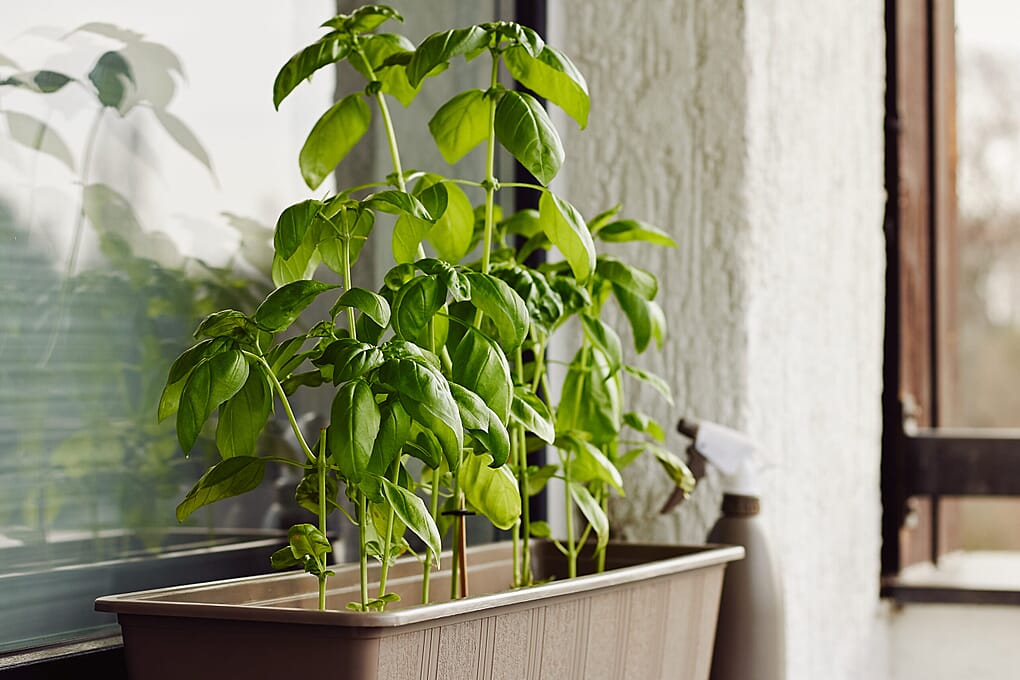Blog
Never Run Out of Basil: Simple Ways to Store and Grow It Year-Round
Few herbs capture the essence of summer quite like basil. Its fragrance alone can transport you to a sun-soaked patio, and its flavor is a star in pasta sauces, fresh salads, homemade pizza, and even simple sandwiches. For many gardeners, basil is a must-grow herb, but it comes with one frustrating truth: basil doesn’t like the cold. Most varieties are annuals that flower, set seed, and die in one season. By the time the first frost rolls around, you might feel like you’re saying goodbye to your basil until next year.
But here’s the good news: with a bit of preparation and creativity, you can preserve basil for winter and keep enjoying it well beyond the growing season. Whether you’re a home cook who wants fresh flavor at your fingertips or a gardener determined not to let a good plant go to waste, there are simple strategies that make basil a four-season delight. Below are three tried-and-true methods, along with pro tips, to help you extend basil’s magic all year.
1. Freeze Fresh Basil for Long-Lasting Flavor
One of the best ways to preserve basil is to freeze it. Freezing helps basil retain much of its bright flavor and color, making it perfect for soups, sauces, and stews when fresh leaves aren’t available.
Here’s how to freeze basil:
- Harvest at the right time: Pick basil before the weather gets too cool, ideally mid-morning when the natural oils are at their peak.
- Bag method: Place about 3 cups of basil leaves in a freezer bag and drizzle with a tablespoon of olive oil. The oil coats the leaves and prevents them from turning black in the freezer. Add another layer of basil, drizzle again, squeeze out excess air, and seal the bag. Lay it flat in the freezer. When you need basil, break off a chunk directly from the bag.
- Cube method: For ready-to-use portions, chop basil, mix with olive oil, and spoon into ice cube trays (or silicone molds). Freeze until solid, then pop the cubes into a labeled freezer bag. Each cube is a convenient portion for soups, sauces, and sautés.
Pro tip: Don’t worry if you don’t have traditional ice cube trays, silicone candy molds, or mini muffin tins work just as well.
By learning how to freeze basil, you’ll enjoy its garden-fresh flavor all winter long.
2. Dry Basil for a Pantry-Friendly Option
If you prefer shelf-stable storage, drying basil is a timeless method. While dried basil won’t have the same intensity as fresh or frozen, it’s still excellent in marinades, rubs, dressings, and tomato-based dishes.
To dry basil:
- Harvest and prep: Cut basil mid-morning, after dew has dried. Remove leaves from stems, rinse gently, and pat dry.
- Air-dry method: Gather small bunches of stems, tie with string or twist ties, and hang upside down in a warm, dry place with good air circulation. Within 1–2 weeks, the leaves should be crumbly. Strip them from the stems and store in an airtight container away from light.
- Oven or dehydrator method: For faster results, spread basil leaves on a baking sheet and dry them in the oven at the lowest possible temperature (usually 170°F or less) with the door slightly ajar. A food dehydrator provides the most consistent results.
Pro tip: Leave the basil leaves whole until you’re ready to use them. Crushing them prematurely releases essential oils, and the flavor fades more quickly.
With this method, you’ll have a steady supply of dried basil for up to a year.
3. Grow Basil Indoors to Keep It Alive All Winter
If you love the idea of snipping fresh basil leaves in January, bring your plants indoors. With proper care, basil can thrive year-round in pots under grow lights.
- Temperature matters: Basil begins to suffer when nighttime temperatures dip below 50°F. If you see black spots on the leaves, it’s a sign the plant is too cold.
- Sunlight needs: Basil requires 6–8 hours of sunlight daily. A sunny south-facing window might work, but most gardeners succeed with supplemental lighting.
- Grow light setup:
- Fluorescent lamps: 2–4 inches above the plants
- High-output or compact fluorescents: about 12 inches above
- HID lights (metal halide or high-pressure sodium): 2–4 feet above, depending on wattage
- Run lights for 14 hours per day for best results.
- Soil and watering: Use a well-draining potting mix. Keep the soil evenly moist but not soggy. Basil is sensitive to overwatering indoors, so let the top inch of soil dry before watering again.
- Maintenance: Pinch flower buds as soon as they appear. This keeps the plant focused on producing leaves, not seeds.
By learning how to grow basil indoors, you’ll have fresh sprigs at your fingertips, even when snow is on the ground.
Bonus: Try Perennial Basil Varieties
Most basil types are annuals, but a few, like African Blue Basil, are perennials that can survive in warmer climates and make excellent indoor plants. Exploring different varieties, such as sweet Genovese, spicy Thai basil, or lemon basil, adds diversity to your cooking and resilience to your garden.
A Winter Without Basil? Not Anymore
There’s no reason to sit inside during the cold months dreaming about your next taste of basil. By freezing, drying, or growing basil indoors, you can enjoy this beloved herb all year long. Each method requires a little effort up front, but the reward is worth it: the flavor and aroma of summer at your fingertips, whenever you need it most.
So, whether you’re tossing frozen basil into a winter stew, sprinkling dried leaves into homemade marinara, or snipping fresh sprigs from your windowsill plant, basil doesn’t have to be a fleeting pleasure. With these secrets, it can be part of your kitchen every season.

